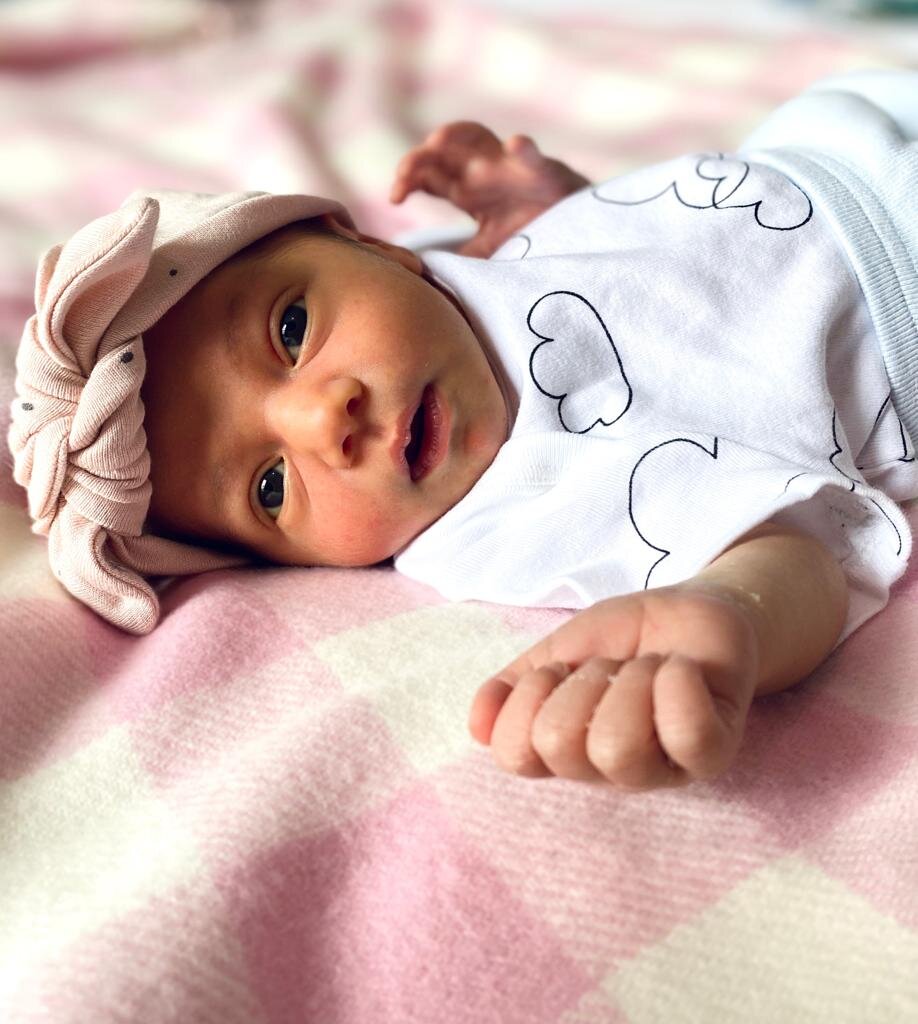
My pregnancy was pretty uncomplicated however I did have bad back pain and pelvic girdle pain in my third trimester. HPHB was great as we met a bunch of new parents who were due about the same time as us and a few of the mums had similar problems to me. It was really helpful to talk it through with them and share ideas. One mum suggested a TENS machine, which really helped me, both for back pain in pregnancy and during labour. It was also just nice to know I was not alone!
Baby Annabel’s birth fell firmly in the category of ‘could have been worse’! We had thought carefully about our birth preferences with the help of the HPHB birth preferences template, but knew from the course (and from hearing other parent’s experiences) that it’s very unpredictable and these could all potentially go out the window – so we knew we’d have to just go with the flow. We had hoped for a midwife-led birth with the help of hypnobirthing and possibly a waterbirth, but unfortunately my waters only partially broke on their own, and because I had had an antenatal urine sample positive for Group B Strep they artificially ruptured the remaining membranes – this meant I had to be on the labour ward from the get-go.
We still used our hypnobirthing techniques however the intensity and pain from the contractions increased so suddenly after the ARM, that after about an hour and a half of trying to manage them, I had an epidural. The epidural was fantastic and I actually cried tears of relief when it started working. The information we learned about epidurals during the HPHB meant I felt totally OK about having one – there are risks associated of course, but I felt really well informed about them and knew it was definitely the right thing for me at that point in time. I was lucky enough that the anaesthetist did a ‘patient-controlled’ epidural which meant I could control (roughly) how strong it was via a button, choosing either to top it up or let it wear off a little bit. After the epidural we had a very chilled afternoon – we had a nap and watched a bit of trashy TV. The only downside was I wasn’t allowed to eat any of the many snacks my husband had packed. He did though!
The midwife examined me 4 hours later and I was fully dilated! So after a further hour of rest, it was time to start pushing. The patient-controlled epidural meant I could hold off pressing the button for that hour so I could feel my contractions a bit more. It was great as I could feel the pressure but couldn’t feel any pain, and in between contractions I was totally comfortable. So much so I was singing along to the songs on our birth soundtrack (Ed Sheeran, Paolo Nutini, etc.). I was pushing for about 1h45min when baby started showing some decelerations on the monitor, so the room started to fill up with more doctors and midwives. They used a ventouse for the final two contractions and so I needed a small episiotomy and there she was!
The first moment I saw her, I was just so relieved that she was there and safe! We loved both doing skin to skin for a bit during the first hour.
I’ll be honest – the first few days at home were hard! I had to stay in hospital with Annabel for a few days of IV antibiotics as a precaution as I had had a few low grade temps during labour. The midwives on the ward were very helpful though and James got some much needed rest at home and got everything ready for our return. The first few days at home were the hardest, and I really struggled with breastfeeding – I remembered Francesca from the course suggesting speaking to an IBCLC for breastfeeding trouble, which we did do eventually – this was so useful and now we’re doing great.
I would definitely recommend HPHB – it’s amazing to have talks from all the relevant professionals in their fields – it’s really reassuring to know everyone teaching on the course is really an expert! The information is presented in a really clear, easy to follow way, and the course materials were thorough but concise and totally on point. I love the packing/shopping lists, and the birth preference template!
Top Tips:
You can get FREE resources tailored to each stage of your pregnancy by subscribing to our newsletter here
You can book your place on one of our award-winning antenatal classes here
Follow us on Instagram for all our latest news and FREE hypnobirthing relaxation sessions
Free downloadable resources and weekly guides for your pregnancy.
Enter your postcode to find your nearest Happy Parents Happy Baby antenatal classes